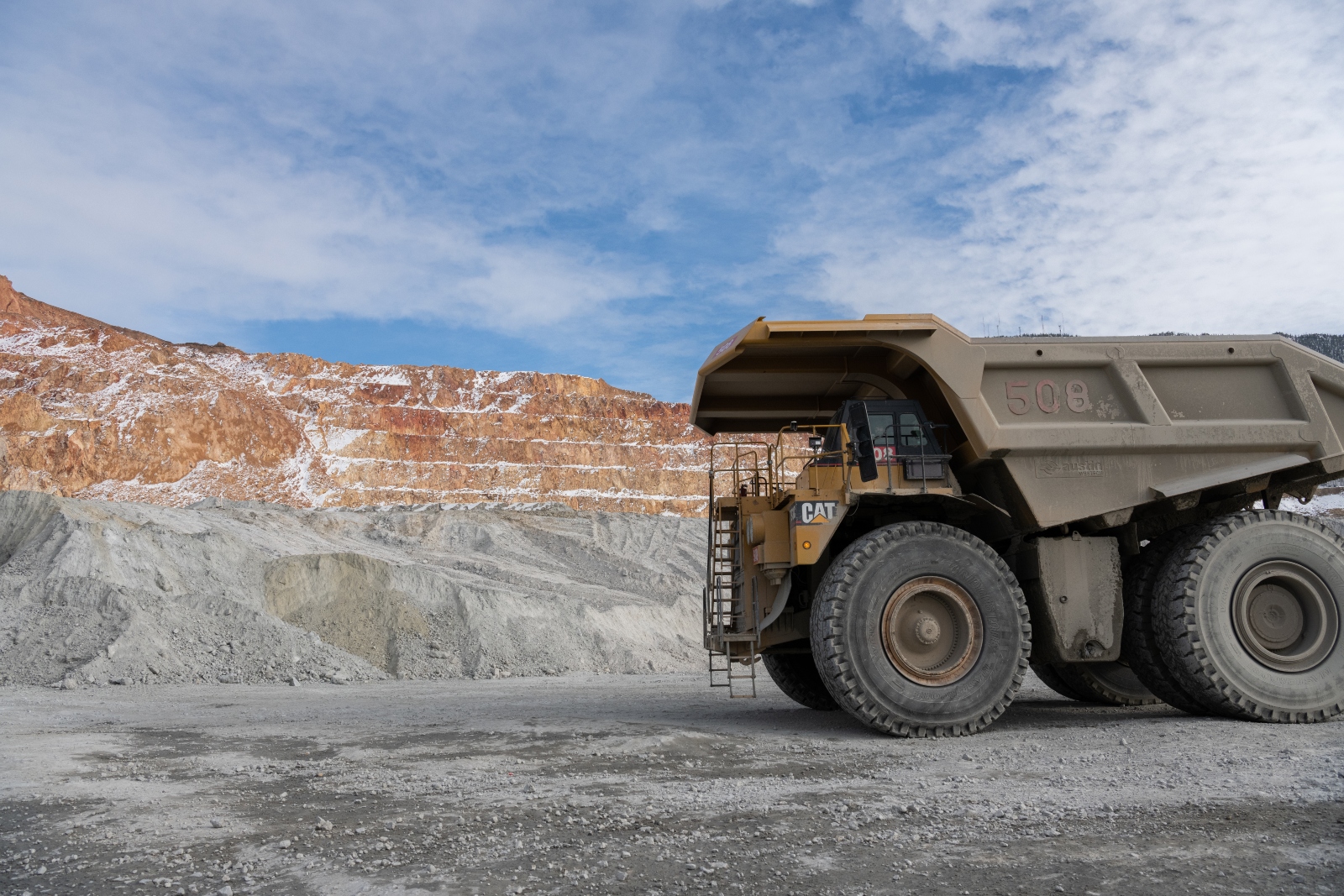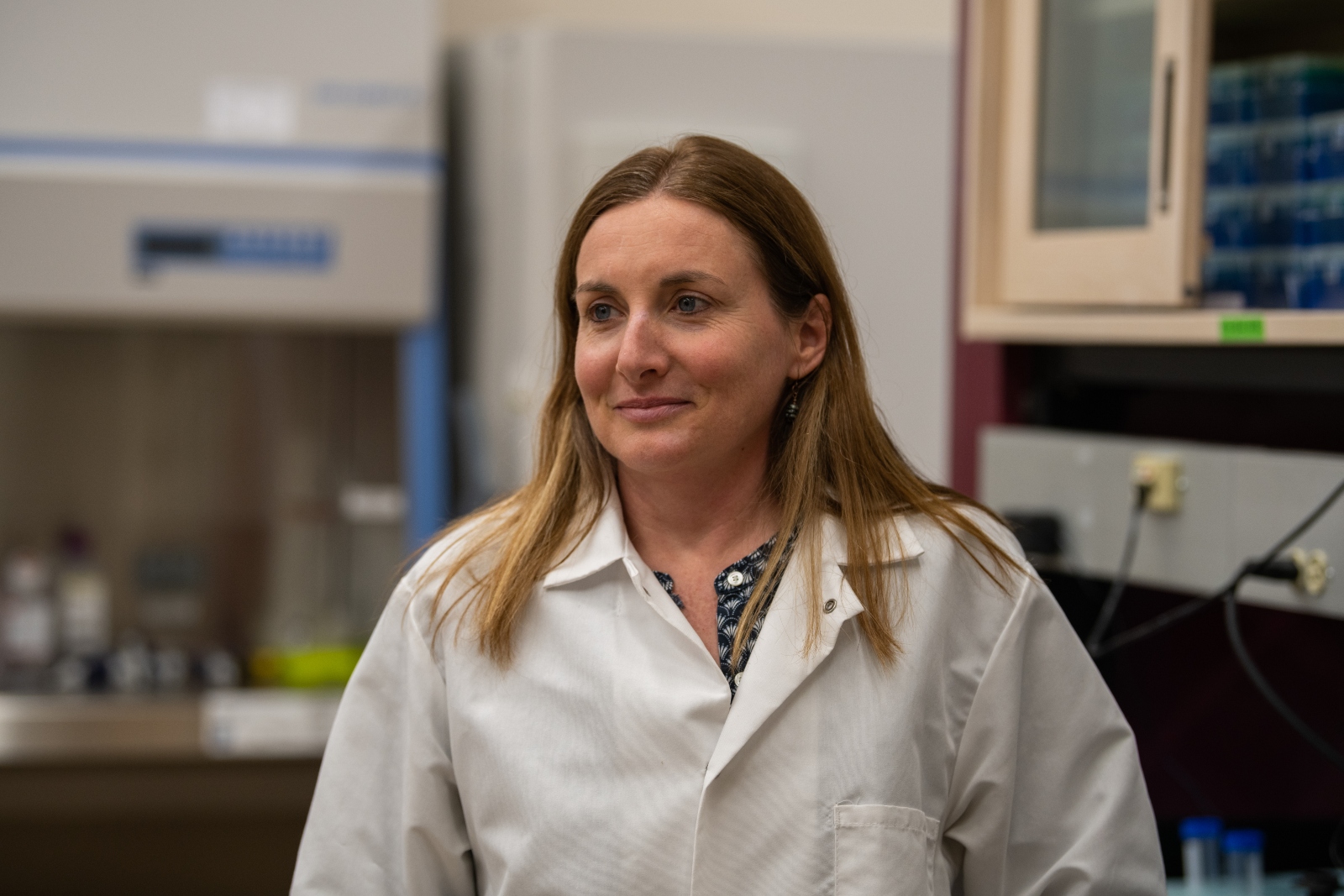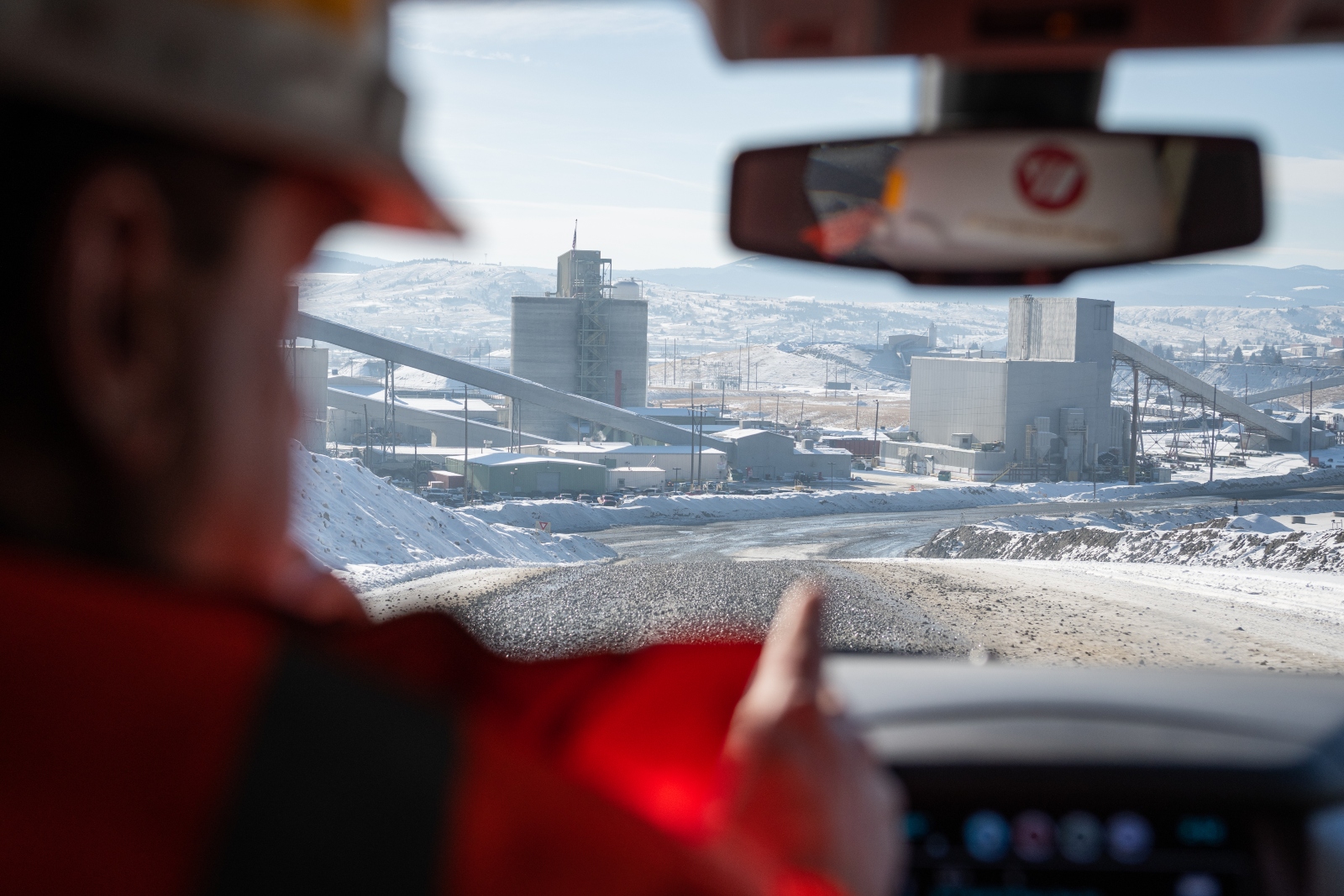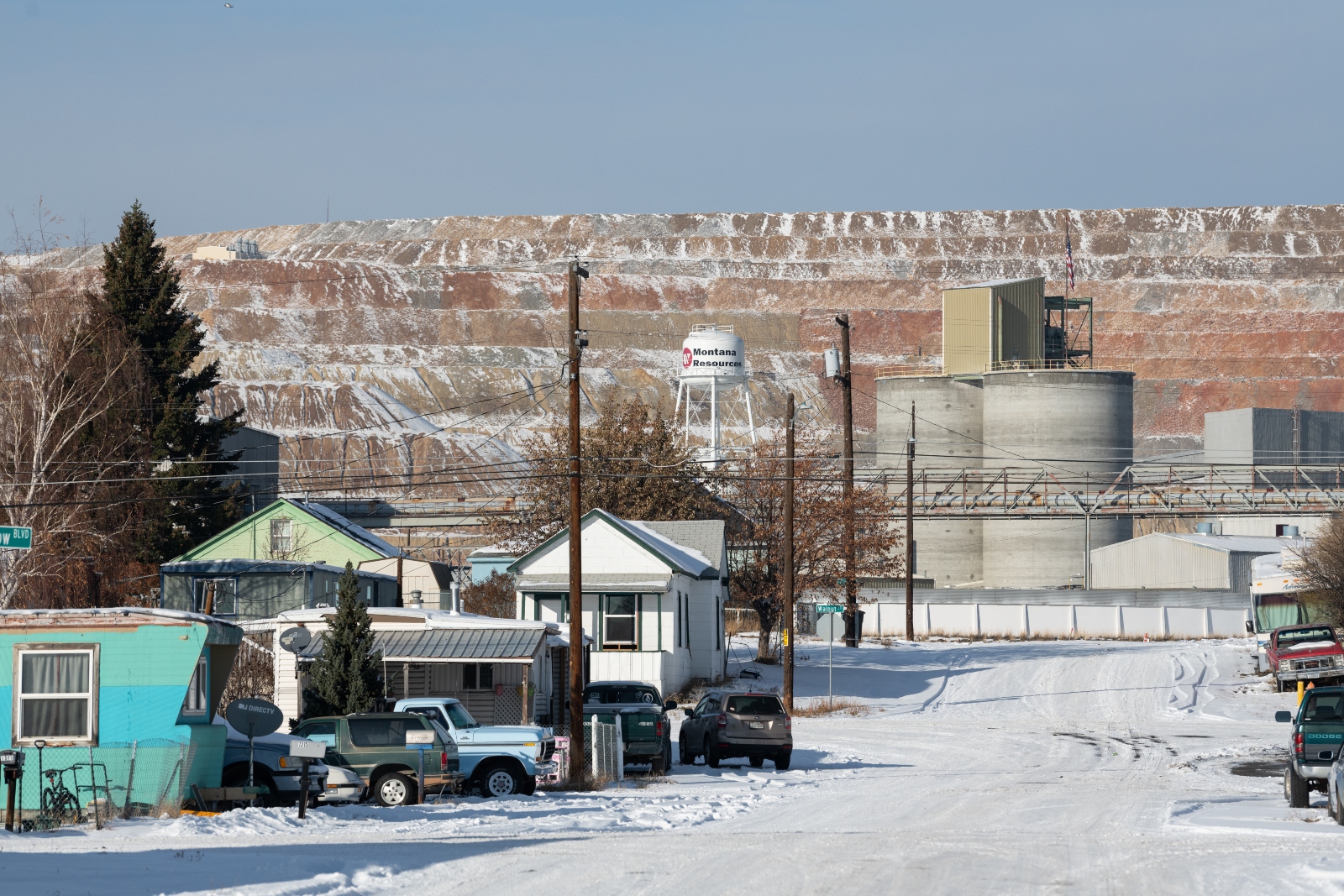This story was originally published by InvestigateWest, an independent news nonprofit dedicated to investigative journalism in the Pacific Northwest.
As she drove into Butte, Montana, six years ago to visit her son, environmental epidemiologist Suzanne McDermott couldn’t ignore the gouged-out mountain that loomed over the town.
It’s the result of decades of open-pit mining that continues to this day in Butte. McDermott was stunned at how close the mining pits were to homes and businesses. In town, she noticed parked cars with a film of dust that looked as if ash had fallen from a fire. Her son, who worked for the local newspaper, later told her of children who had developed mysterious ailments in Butte.
“It just struck me that there’s something very unhealthy going on here,” said McDermott, a professor at City University of New York Graduate School of Public Health and Health Policy.
Butte, a once-booming city, is home to a massive Superfund site overseen by the Environmental Protection Agency. Past mining has polluted the soil and water in and around Butte, and when Atlantic Richfield Company (ARCO) abandoned the mine in 1982, it left a pit that’s since filled with water so toxic that it kills flocks of birds that land on it.
But what troubled McDermott most wasn’t the poisoned Berkeley Pit. It was the active copper and molybdenum mine right next to it, operated by Montana Resources, a company owned by the richest man in the state, Dennis Washington. At the edge of town, she could look across the street and watch the dust from the mine rise into the air and drift over to people’s homes.
Locals have wondered for years whether that dust carries heavy metals that may be slowly poisoning them. The EPA and health officials, however, have maintained what strikes many as two conflicting messages: One, that previous open-pit mining in Butte left behind a toxic legacy necessitating a major cleanup effort. And two, that the current open-pit mining operation is safe.
McDermott and other independent scientists have questioned that narrative through a series of small, underfunded studies in recent years. They’ve received pushback from the mining companies in town, ARCO and Montana Resources.
But they’ve also run into a more unlikely foe: the EPA.
Emails obtained by InvestigateWest reveal a cozy relationship between EPA officials and the mining companies in Butte. Thousands of pages of documents detail how the EPA coordinated with the very companies they’re supposed to be regulating to attack researchers like McDermott and smear peer-reviewed science that has raised alarms over current mining practices.
In one email, EPA toxicologists directly urged Montana Resources to fashion a response meant to pressure scientists into retracting their findings. In another, the mining company asked if the EPA could dig into the funding sources of McDermott and another researcher. In a third correspondence, the EPA deferred to a mining company official for guidance on public messaging.

Erick Doxey / InvestigateWest
The documents provide a rare, important glimpse into how a regulatory agency can fall under the influence of industry, said Christopher Sellers, an environmental health researcher at Stony Brook University who reviewed the cache of records. Sellers has studied how the EPA could side with private industry and warned of such scenarios under the Trump administration, but had never seen his concerns put into practice so clearly.
“You have it there, a paper trail — at least for this scientific sort of arena where a lot of these political battles or battles of regulation are now fought,” Sellers said.
The EPA declined interview requests for this article and would not answer questions about individual emails between the agency and industry officials. Instead, spokesperson Richard Mylott provided an emailed statement stating that the EPA had a responsibility to consult with all parties in response to new research.
In Butte, the scientific battle has obscured the answer to a longstanding question: Whether the thing that’s long been the livelihood in the small mining town could also be costing lives.
“There’s an alliance that has developed over the years between the EPA and the mining company. It’s clear as day,” McDermott said. “Our government should be working for us and not some company.”
Raising alarms
In 2019, McDermott and two other scientists published a study that said the current mining in Butte may be tied to a “potential public health emergency.” The study compared Butte samples of meconium — a baby’s first poop — to those from South Carolina where no mining operations exist. The Butte samples had metals at levels thousands of times higher than South Carolina.
The researchers originally thought of the study as a pilot and hadn’t planned to publish it. But the results were so shocking that they felt they needed to make them public.
One of the other scientists on the study, however, argued prior to publication against including the “public health emergency” line. That scientist was Katie Hailer, a bioinorganic chemist at Montana Technical University in Butte, who thought the claim would strike at the heart of the town’s identity.
“I knew that that sentence was going to cause issues,” Hailer says. “But I underestimated the number of issues that sentence was going to cause.”
Butte’s always been a mining town. In the early 1900s, its underground mines — manned by some 10,000 miners — supplied the copper for the country’s electrical grid, and it gave the “copper kings” of the time incredible wealth.
Today, Butte’s population of 34,000 is less than half of its heyday. Abandoned mine shafts are scattered around a shrinking university and historic brick buildings. Still, Montana Resources employs nearly 400 people, and Hailer knows the current mine wields influence. Any suggestion that it might be dangerous could threaten people’s livelihood. But that 2019 study wasn’t the first to take aim at the mine in Butte.
Two years earlier, Hailer published a paper that found higher metal levels in Butte subjects’ hair as compared to another Montana city. Notably, the Butte subjects had significantly elevated levels of arsenic in both their hair and blood. Hailer urged caution in interpreting the results, due in large part to the small sample size used in the study, and the research didn’t attract much attention.
“It really wasn’t talked about at all in the community for two years,” Hailer said.

Erick Doxey / InvestigateWest
On the other side of the country, McDermott, meanwhile, researched Butte as sort of a passion project in her career of studying environmental impacts on human health. While she often receives federal funding for large studies, she self-funded the smaller Butte research, she says. She previously examined death data for Butte residents, finding that adults living in and around Butte had higher rates of cancer deaths and other diseases than the rest of the state. In a separate study, she also found a higher incidence of brain and central nervous system cancers in children living in and around Butte compared with other areas of Montana.
Neither study established the cause as coming from heavy metals or active mining, though arsenic and other heavy metals are known to cause cancer.
Meconium, McDermott and Hailer thought, could potentially show how mining in Butte exposes humans to dangerous metals. For good measure, they enlisted the help of Jamie Lead, a nanoscientist in the top 1 percent of cited scientists worldwide in 2019.
In an effort to soften any possible blowback from the EPA, Hailer presented the raw data to EPA officials months before the study was published. But Hailer says the EPA was disinterested and didn’t dig into the questions raised by the data.
Then the study was published in the journal Science of the Total Environment. A couple weeks later, the local media got their hands on it. The article sent waves across the community.
Suddenly, the EPA was interested.
Siding with industry
In the weeks after the meconium study was published, toxicologists from the EPA working on the Superfund site in Butte sent a flurry of emails to public agencies, local health officials, and the Centers for Disease Control and Prevention asking for input.
But the EPA also sought guidance from Montana Resources, the mining company, and ARCO, owned by oil giant BP. In emails with those industry officials, the EPA openly coordinated strategies to rebut the study, aligned on public messaging and discussed tracking the funding of the researchers.
McDermott, it should be noted, admits that the meconium study has its weaknesses. Looking at metals in meconium is a relatively new area of research. In fact, in an effort to finalize a methodology for future research, McDermott is now working on a large study — with a grant from the EPA — to analyze meconium in New York City.
Looking back now, she says that it was not a “good comparison” to compare Butte meconium to South Carolina. She suspects that the collection process of the samples may have differed in the two locations, and that may account for part of the vast difference between the two.
Despite the criticisms of the study, however, Hailer and McDermott maintain that the Butte samples raise enough questions for the EPA to conduct further research on the issue. The presence of arsenic alone is alarming, Hailer says.
“Every one of those samples had detectable arsenic at levels that I would say are on the higher end [compared to other published research],” Hailer says.

Erick Doxey / InvestigateWest
Ron Sahu, a mechanical engineer and independent consultant on environmental regulatory compliance, says the meconium study raised “important questions that deserve to be run down.” It isn’t a perfect study, but any flaws should be addressed through scientific inquiry, he says.
“If you think there are methodology problems, then let’s fix them,” Sahu says.
The EPA quickly focused on the South Carolina data. It argued that metal levels in that state were not only low compared to Butte’s samples, but they were also out of line with samples from other studies that measured metals in meconium. The differences with the South Carolina data have not been fully explained since Lead, the nanoscientist, has declined to share the data. (He did not return a message seeking comment for this story.)
The EPA contends that the Butte levels are roughly in line with other meconium studies if the South Carolina data is taken away. But comparing Butte samples to other studies can also present problems. Some studies on meconium measure dry weight, while others used wet weight, for example. Other studies involving meconium, McDermott notes, were also done in places where there were toxic accidents, making comparisons to Butte less helpful.
Instead of doing a larger study, the EPA led an attack in direct coordination with the mining companies. In one email, the EPA asked Mark Thompson, the vice president of environmental affairs for Montana Resources, if he could pressure Hailer and McDermott into walking back their findings, based on a company consultant’s review of the study.
“We believe that any scientist that see’s (sic) both our review and your review would only have one conclusion,” wrote Nikia Greene, the EPA’s remedial project manager for the Superfund site in Butte. “So if you decide to send an email please do not copy us, but let us know what you decide.”
Thompson didn’t send the email. As he recalled in an interview with InvestigateWest, he told EPA officials at the time that “no one’s going to give a shit what the mine says or what ARCO says,” and that the EPA should be asking other state or federal agencies to analyze the study instead.
In a statement to InvestigateWest, Mylott, the EPA spokesperson, said that the agency had a “responsibility to objectively evaluate the McDermott study” and communicated with “various parties” to do so, including the Agency for Toxic Substances and Disease Registry, the Butte-Silver Bow Health Department, and the Montana Department of Public Health and Human Services.
“These actions reflected a desire to develop and share accurate information and encourage accountability in clarifying the study,” he said.
Other emails suggest Montana Resources had direct influence over how the EPA responded. In one email, Thompson asks Greene at the EPA, “Have you made any progress with the publication that published the paper?” Later, the EPA would ask for the journal to retract the study. That request was rejected.
The emails show how Montana Resources felt comfortable asking the EPA for additional help. Later in 2020, Thompson saw a flier asking for volunteers for a pilot study led by McDermott and another researcher, David Hutchins. He sent an email to Greene and local health officials.
“David Hutchins and McDermott are up to their old ways. Any chance on tracking their funding?” Thompson asked.
Greene forwarded the email to three other officials with a note that said, “FYI: This is on the verge of unethical. Charlie and I are looking into this. …We will keep you posted.” The EPA would not discuss the email with InvestigateWest.
But in an interview, Thompson says that the EPA did, in fact, agree to “dig into the federal funding side of things” to see if a federal source was funding McDermott’s research. If so, Thompson says, the EPA “wanted to call that into question.”
“There were some conversations about, you know, where’s this money coming from? Shouldn’t they have something to say about the quality of what’s being used with their money?” Thompson says.
Hailer said Montana Resources also tried to pressure Montana Tech, her employer. Shortly after the meconium study was published, she was told that Montana Resources requested a meeting with her boss with the intention of silencing Hailer. (The dean of her college at the time confirmed that Montana Resources requested the meeting, but declined to go into specifics on what was discussed.)
Hailer tried to stay out of the public eye for two years following the meconium study, but she’s still working on research related to the mining in Butte, albeit without major funding support. She hadn’t seen the emails obtained by InvestigateWest until now.
“I’ve already experienced, and seen firsthand, this interwoven relationship between ARCO, Montana Resources, and EPA,” Hailer says. “It’s completely inappropriate. You can’t have the people that made the mess also get to be the people that tell the community how they’re going to clean up the mess.”
‘Regulatory capture’
The coordination between the EPA and the companies they are meant to police was a central concern for many scientists during the Trump administration.
When Donald Trump became president in 2016, he appointed Scott Pruitt as the head of the Environmental Protection Agency. Pruitt, previously Oklahoma’s attorney general, had a cozy relationship with the fossil fuel industry and a record of suing the EPA. Shortly after taking over as head of the EPA, emails were released that showed that as AG, Pruitt “coordinated with industry officials to fight unwanted regulations from Washington.”
A team of researchers took a hard look at the EPA under Pruitt, analyzing his speeches, political appointments and actions. In a paper published in 2018, they determined that the EPA was so pro-business that it was “enabling a form of regulatory capture.” That is, the EPA was working more for the industries it’s supposed to be regulating than the public interest.
Sellers, the Stony Brook University professor, and one of the co-authors of the paper, said that while the EPA has often leaned in favor of industry officials, the Trump administration was “unprecedented” for opening the doors to industrial influence. The agency was set on undermining its own rules and regulations and undercutting its own budget in order to help industry, he said. The administration also stacked industry representatives on scientific advisory committees. Corporate scientists, Sellers says, were part of “gaming the scientific system” in favor of industry, according to the paper.
But at the time of writing the paper, Sellers admits that they didn’t have many real-world examples of the EPA working for industry.
“We didn’t really have a paper trail to prove, ‘Here’s an industry approach, here’s what they want the agency to do, here’s the agency actually responding and doing it, basically,’” Sellers says.
The communication between the EPA and Montana Resources regarding McDermott and Hailer’s research, however, is “significant,” Sellers says. He added, though, that there are no legal consequences for the EPA taking a certain side in a scientific debate.
A safe place?
Steve McGrath has lived in the Greeley neighborhood that’s directly across from Montana Resources for decades. Throughout the day, he can see rocks being blasted and trucks roving back and forth across the mine to haul ore. While some in Butte don’t worry about the dust emanating from the mine, McGrath can’t ignore it.
“The people in this neighborhood are continually getting bombarded by this dust,” McGrath says.

Erick Doxey / InvestigateWest
Ten years ago, McGrath, who also works as an analytical chemist at Butte’s Montana Technical University, brought a bag of gray dust that had accumulated at his house to a local health department meeting. (Local health officials did not respond to requests for comment.)
“I asked, ‘Is this a health concern? Should I be worried about it?’” McGrath recalls. “And the reply I got from them was that it’s simply a nuisance and outside the purview of their regulation.”
Thompson, with Montana Resources, has been at the public meetings where neighbors of the mine have brought a piece of glass from their backyard filthy with dust. He agrees with them on one thing: More research is needed to get to the bottom of this. But in his view, independent scientists are attacking mining in Butte with scant evidence. And the dust in the Greeley neighborhood, he argues, isn’t as bad as people say.
“I’m not seeing what they’re seeing,” Thompson says.
Montana Resources has spent millions on dust mitigation. The company, he says, believes in being a good neighbor. After all, Thompson’s own son lives in the Greeley neighborhood closest to the mine.
“My kids asked me, ‘Am I in a safe place?’” Thompson says. “And I said, ‘You’re fine.’ I’m pretty confident. I’ve got my own family on the line.”
Montana Resources has funded studies looking at dust impacts in Butte, but residents often won’t trust studies funded by the mining companies. Besides, those studies often have their own limitations.
For instance, Montana Resources hired an engineering firm to analyze particulate matter in the Greeley neighborhood in 2021. The research, also backed by the Montana Department of Environmental Quality, found that particulate matter levels were safe because they met federal standards.
Sahu, the independent consultant, studied the data and said that was the wrong conclusion to reach. For starters, except for lead, there are no federal standards for individual metals in the air such as arsenic, copper or molybdenum — metals of concern in Butte. The EPA’s standards for particulate matter are looser than those of the World Health Organization. In the Greeley neighborhood, annual averages were recorded from 2018 to 2020 that would exceed the WHO limit. The Biden administration proposed stricter standards in January, taking aim at the Trump administration for retaining the looser standards.
“You cannot conclude that if you meet the standards, that therefore, you are safe,” Sahu said at a meeting in Butte last year.
Ed Banderob, president of the local neighborhood community development corporation near the mine, has lived in Butte for roughly 15 years. Today, despite the handful of independent studies in the last decade, he still feels like he doesn’t fully understand the risk of living where he does. Banderob maintains that Butte residents have no intention of shutting down the active mine — “we’re not that stupid,” he says. They just want answers.
“Our position is that it would be best to recognize the problems and openly address them,” Banderob said. “Their attitude has been, ‘If we can sweep it under the rug, that’s the best way to go.’”
McDermott sees the pattern in Butte continuing: The EPA, mining companies and other governmental officials aren’t making a good faith effort to find answers, McDermott argues. Instead, they focus on “red herrings.”
“They keep doing little things to make people feel better, to keep people distracted,” she says. For McDermott, that’s not how science should proceed.
“Why not repeat my studies? Why don’t you contract with the university and have them do the sample and the analysis, instead of screaming at me that I’m wrong?” McDermott says. “That’s how science progresses.”
This report was supported in part by a grant from the Fund for Investigative Journalism.

